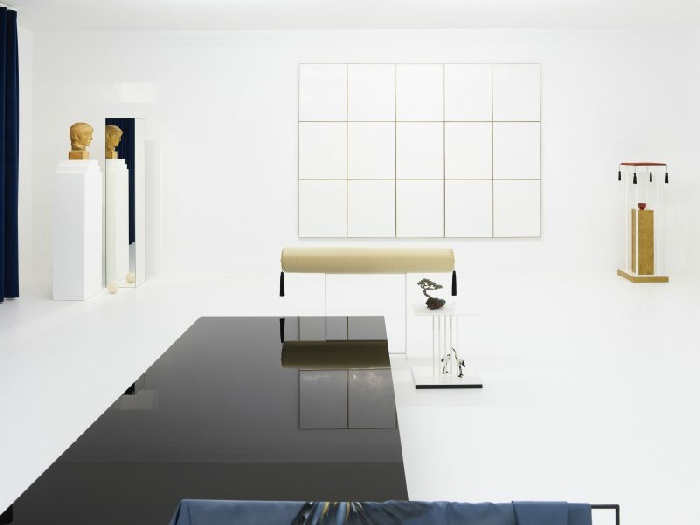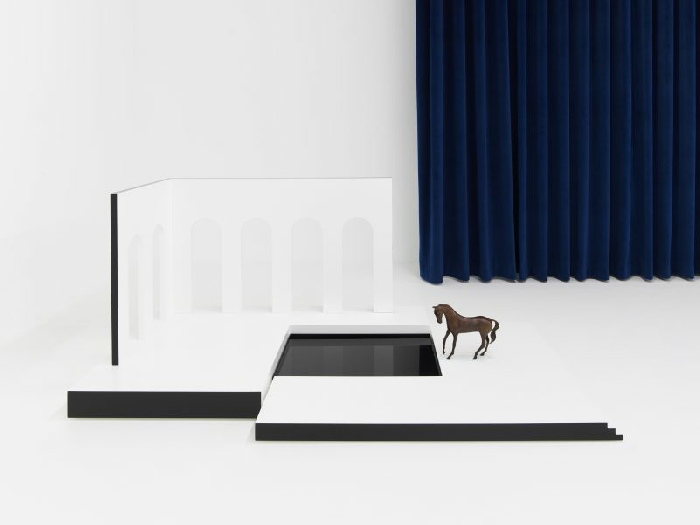Press Release
In Haris Epaminonda’s exhibitions, fragments from the natural world find their counterparts in shards of historical materials. Found and crafted elements such as architectural carvings and modifications, support structures in the form of pedestals and platforms, draperies, vessels and statuettes as well as pages from old books form the visual vocabulary out of which Epaminonda weaves unimagined narratives. The individual components arranged in the gallery are in palpable interaction, though the specific character of their interrelation remains enigmatic. It is here that Epaminonda’s art of visual storytelling encounters the particular history of the exhibition site.

Haris Epaminonda, VOL. XXIII
Secession, Vienna (Austria)
09.02 - 01.04.2018

Exhibition February 09 -

© ArtCatalyse International / Marika Prévosto 2018. All Rights Reserved
Haris Epaminonda. Photo Sophie Thun


The artist’s exhibitions are titled as consecutively numbered “Volumes,” suggesting an abstract ordering principle rather than referring to specific contents so as to remain open to different interpretations and readings. The predominant straight lines and geometric shapes and the reduced palette ensure structure and organization and function like a coordinate system. Epaminonda’s use of materials is careful and meticulous; the objects she selects are vehicles of meaning by virtue of their form as well as materiality and so merit close inspection. The surface—the “skin,” one might say—of the sculptures is an aspect to which the artist pays particular attention, often employing traditional or historic artisanal and architectural techniques like lacquer painting or Stucco Veneziano, a lime-
In a sense, Epaminonda’s subtly arranged assemblages are a more elaborate and expansive version of her earlier works, in which she applied techniques of collage to found film and video footage and images from books and magazines. Video editing and the composition of collages, to her mind, are closely related processes, since both are about making definite cuts.
In VOL. XXIII at the Secession, Epaminonda transforms the space into a whitewashed room with mirrors and reflections as prominent features, an environment that recalls scenes from Stanley Kubrick’s 1968 science-
Here the moon is rising from the sea horizon, counterbalanced by a blue velvet curtain suspended from the ceiling.
A pool filled with water reflecting a set of arches is reminiscent of a nocturnal sight in a Roman alley. The serpent has left the scene. The bust of Apollo awaits a new inscription.
Haris Epaminonda was born in Nicosia (Cyprus) in 1980 and lives and works in Berlin and Cyprus.
Curator: Bettina Spörr